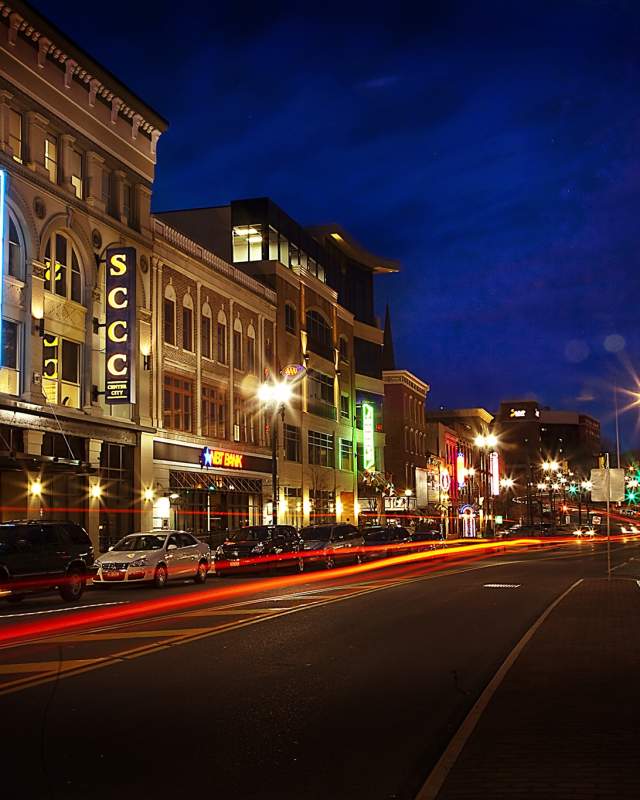Cities & Towns
City of Schenectady
Schenectady is a city rich in history and accomplishment. It was here where Thomas Edison founded what would become the General Electric Company, where George Westinghouse invented the rotary engine and air brakes, where the American Locomotive Works once made virtually every steam and diesel locomotive to pull passengers and move freight across our country, and where New York State’s first historic district, the Stockade, was named.
Duanesburg
Originally known as Duanes' Bush, Duanesburg was established as a township by patent on March 13, 1765. According to Documentary History of New York Vol. lV, pg. 1067, "Mr. Duane entered in March, 1765 into contract with a company of twenty Germans from Pennsylvania of whom about sixteen (families) came on track, and they made the first permanent settlement in that now flourishing town". The township was combined with Schoharie, New York, as the United Districts of Schoharie and Duanesburg on March 24, 1772, which became the town of Schoharie in 1788. Duanesburg became its own town once again in 1789.
Delanson
The village of Delanson is situated in the southern part of the town of Duanesburg, Schenectady County, New York. It lies between the historic Cherry Valley Turnpike, also known as the Third Great Western Turnpike (now part of US 20), and another highway once known as the Danforth Turnpike (now New York State Route 7).
Under the name of Delanson, its history dates back only to 1893. The sister village of Quaker Street, situated approximately one-half mile to the south of Delanson and on the Danforth Turnpike (now New York Route 7), was the pioneer business center serving the surrounding territory before the era of railroad transportation. What is now known as Delanson was then referred to as Toad Hollow because it lies to the head of the Normans Kill drainage.
Glenville
Glenville is named after Alexander Lindsay Glen. Glen, who was a native of Scotland, acquired a large tract of land in the area in the 1650s. He named his manor at Scotia after his native country. The Seeley Farmhouse was listed on the National Register of Historic Places in 1978, the Swart House and Tavern in 2007 and the Bishop Family Lustron House was listed the following year. The Glenville District No. 5 Schoolhouse was listed in 2013.
Niskayuna
The Town of Niskayuna was created on March 7, 1809, with an original population of 681. The name of town was derived from early patents to Dutch settlers: Nis-ti-go-wo-ne or Co-nis-tig-i-one, both derived from the Mohawk language. The 19th-century historians Howell and Munsell mistakenly identified Conistigione as an Indian tribe, but they were a band of Mohawk people known by the term for this location. The original meaning of the words translate roughly as "extensive corn flats", as the Mohawk for centuries cultivated maize fields in the fertile bottomlands along today's Mohawk River. They were the easternmost of the Five Nations of the Iroquois Confederacy.
Princetown
The current Town of Princetown was established in 1798 by the New York State Legislature combining lands formerly known as Corry's Bush and land belonging to the Dutch Reformed Church in Schenectady. It was named for John Prince, a New York State assemblyman from Albany County who lived in Schenectady proper at the time. Many of the early settlers of the town were from Scotland, and for almost all of its history, the town has been rural with an economy based in agriculture. Today the town is mostly a mix of farming and exurban development with a little light industry.
Rotterdam
Situated near the eastern end of New York State's Heritage Corridor at what is known as the "Gateway to the West", the town of Rotterdam is closely linked with the early development of Schenectady. At that time the present town of Rotterdam served as the outlying farmlands and wood lots for the settlers. With few exceptions, these settlers made their homes in the stockade in Schenectady but went to their farmlands during the daytime.
The lands now known as Rotterdam became Schenectady's third ward when that city was incorporated in 1798. Rotterdam retained that status when the county of Schenectady was chartered in 1809. During this period, a council of aldermen and assistants from each of the four wards governed the city of Schenectady. In May 1819, the city council recommended that the third and fourth wards be separated out as towns, and on December 31, a petition to the state legislature was drafted. The legislation was passed on April 14, 1820, the final day of the legislative session, creating the town of Rotterdam.
Village of Scotia
The land was purchased by Alexander Lindsay Glen, a native of Scotland, from the Mohawk people in the 17th century. Glen named his estate Scotia (Latin for "Scotland") after his home country. Scotia was the location of a military encampment during both the French and Indian War of 1754 and again during the War of 1812. During the 1800s, Scotia was known for its production of brooms, over 1 million annually for a time. In the 20th century, Scotia became a thriving bedroom community for employees of Schenectady employers such as General Electric. During World War II the Scotia Naval Supply Depot (1942-1971) employed over 2000 workers.




